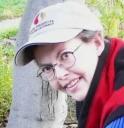Friday, May 16th, 2008 12:00 pm
Contributed by: Jessica Fries-Gaither
As the school year draws to a close, many teachers and parents wonder how to promote continued learning over the three month holiday. Summer reading lists are a staple of many schools, and local libraries often offer summer reading programs with fun incentives. ReadWriteThink, a a partnership between the International Reading Association (IRA), the National Council of Teachers of English (NCTE), and the Verizon Foundation, also provides resources to ensure that reading, writing, and learning continues into the summer months.
Why summer learning?
Research shows that without continued practice in reading and writing, students face a big loss in literacy skills when they return to school in the fall. Summer vacation provides a wonderful opportunity for families and caregivers to help children improve their literacy skills in a relaxed, informal setting. Summer learning also demonstrates that reading and writing are lifelong skills and not just something that happens in the classroom.
What can families do to promote summer learning?
Many teachers are familiar with ReadWriteThink and their high-quality lesson plans and resources. Learning Beyond the Classroom offers the same quality of materials, but designed for parents, caregivers, and informal educators instead. The site is divided into four grade bands: K-2, 3-5, 6-8, and 9-12. At each level, there are literacy activities, booklists, podcasts and videos, and tool tip sheets that provide assistance with ReadWriteThink’s online tools. Each level also includes an age-appropriate reading record, so kids can track what they’ve read over the break.
And don’t, worry - activities do not mean formal instruction, tests, or an education degree! Adults can promote literacy in a number of fun ways - acting out nursery rhymes, playing bingo, creating cartoons or a magnetic poetry set, or even utilizing web 2.0 tools such as blogs, wikis, and YouTube!
In addition to using the online resources, the site suggests that adults get caught reading and writing, read or write to their children or teens, and share their love of reading and writing.
So check out Learning Beyond the Classroom to ensure an engaging summer break and a confident return to school in the fall!
 magazine in the next free web seminar in the NSDL series:
magazine in the next free web seminar in the NSDL series:



 Follow us on Twitter
Follow us on Twitter


Posted in Topics: Classroom connections, Education, Lesssons and activities, Professional Development, Science
No Comments